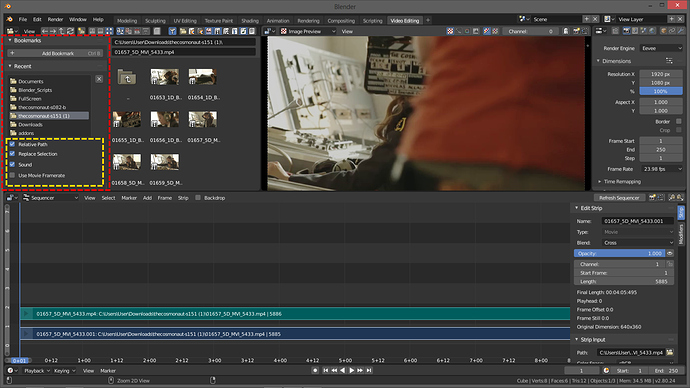Great to follow the developments of the workspaces. On the VSE workspace as it is now I think the file-browser needs to have the import settings visible, because casual users will experience bad playback performance if ex. the fps of the imported clips doesn’t match the project properties. So I think those options should be visible:
The import properties doesn’t show these options in the file-browser unless you add > movie, and it shouldn’t be like that.
I know I should not request features, but I think that at least ‘Use Video Ratio’ should also belong there and maybe ‘Use Video Colorspace’ too? Or maybe just one checkbox saying something like: “Set Scene Properties” containing fps, ratio etc.
Some further suggestions for the defaults of the VSE here:
